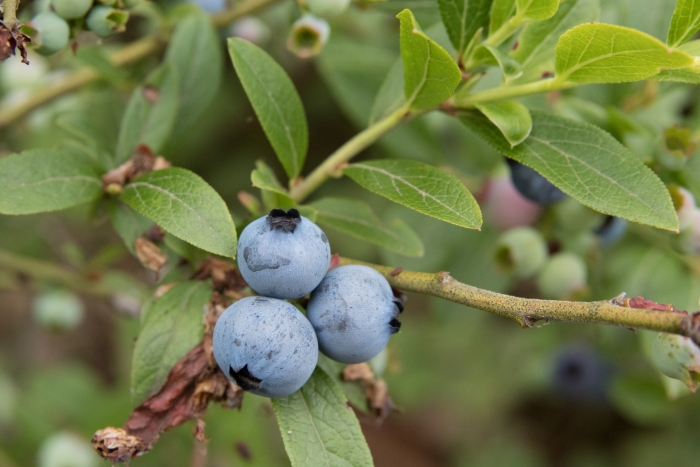Lowbush Blueberry
(Vaccinium angustifolium)
Lowbush Blueberry (Vaccinium angustifolium)
/
/

Σ64
CC BY 3.0
































































































Estimated Native Range
Summary
Lowbush Blueberry thrives in acidic, well-drained soils and is often found in areas that have been cleared by fire, as it is fire-tolerant and can vigorously resprout post-burn. This adaptability makes it suitable for cultivation in a variety of settings, including wild gardens, as ground cover, and in edible landscaping. It is also used in commercial blueberry production. While it prefers full sun, it can tolerate part shade, and it requires medium amounts of water. Gardeners should note that while it is low-maintenance, it can spread aggressively in favorable conditions. To encourage fruit production, periodic controlled burns or pruning can mimic the natural fire cycles that benefit this plant.CC BY-SA 4.0
Plant Description
- Plant Type: Subshrub, Shrub
- Height: 0.5-1 feet
- Width: 2-5 feet
- Growth Rate: Moderate
- Flower Color: White
- Flowering Season: Summer
- Leaf Retention: Deciduous
Growth Requirements
- Sun: Full Sun, Part Shade
- Water: Medium
- Drainage: Fast, Medium, Slow
Common Uses
Bank Stabilization, Bee Garden, Bird Garden, Border Plant, Butterfly Garden, Drought Tolerant, Edible*Disclaimer: Easyscape's listed plant edibility is for informational use. Always verify the safety and proper identification of any plant before consumption., Erosion Control, Groundcover, Hummingbird Garden, Low Maintenance, Potted Plant, Salt Tolerant, Street Planting
Natural Habitat
native to the open woodlands, forest edges, and barrens of the Central and Eastern United States and Eastern Canada
Other Names
Common Names: Sweet Lowbush Blueberry
Scientific Names: , Vaccinium angustifolium, Vaccinium tenellum, Vaccinium pensylvanicum, Vaccinium angustifolium var. laevifolium, Vaccinium angustifolium var. nigrum, Vaccinium lamarckii, Vaccinium brittonii, Vaccinium angustifolium var. hypolasium, Vaccinium angustifolium var. angustifolium
GBIF Accepted Name: Vaccinium angustifolium Aiton